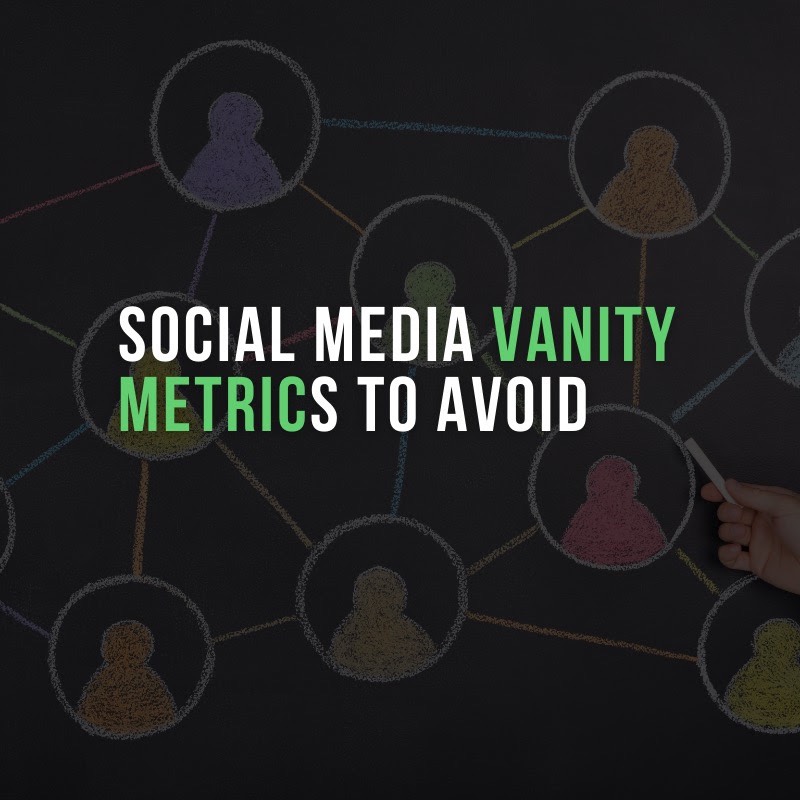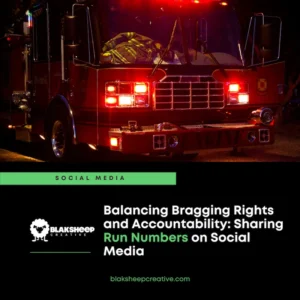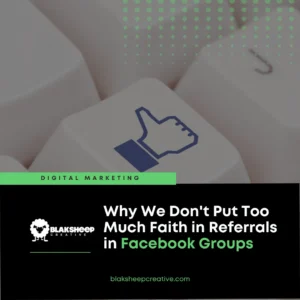Social media is an increasingly popular channel for digital marketing activities. Its ability to reach broad audiences in a targeted and engaging way has encouraged many organizations to build this channel into their digital marketing plans.
Social media can help drive awareness, drive brand engagement, and has a lot more to offer – but how do we know that we are using the correct measures to track its success?
Many measures are available like so many digital channels, but it is critical to avoid vanity metrics.
Vanity metrics are things you can measure that do not matter.
The article will briefly introduce social media vanity metrics and how to avoid them.
What is a Vanity Metric?
A vanity metric is a metric that is easy to measure and appears to be indicative of the success of an activity, but that’s not the case.
Usually, vanity metrics are easy to measure and are often connected with social media by using the number of followers or how many retweets one gets as examples.
Since these numbers do not represent a good indication of success, organizations need to ensure that they only use objective metrics to plan their digital marketing campaigns.
Social Media Metrics That Don’t Matter
Vanity metrics that don’t matter are the numbers that show how many followers you have or how often people retweet one of your tweets.
Some other vanity metrics are:
- likes
- shares
- comments
- social media followers
- Facebook fans
The number of likes on your Instagram posts might seem impressive, but you need to be able to demonstrate the value these are generating for your business.
As far as numbers go, vanity metrics look great on paper. But this sheen fades when they’re used in essential aspects like ROI or customer lifetime value (CLTV) – because all those digits contribute little sustenance towards proving that marketing is making money and then some more after it’s made a profit already!
Getting caught up in these metrics can be really easy, and they may make you feel more successful than you are.
This is why it’s crucial to avoid vanity metrics at all costs and stick to the real ones, like conversions and ROI.
Social Media Metrics That Do Matter
Your social media tactics are only as effective as the metrics you track to measure them. Now that we know which metrics don’t matter let’s discuss those that do.
Hint: Those metrics gleaned from your social media channels help you reach your business objectives and marketing goals.
These metrics matter:
Volume:
The first – and easiest to measure! – social media metric is volume. Counting tweets and posts is important, particularly if you want to understand awareness or reach for your brand.
But within this, make sure you’re counting how many messages about your brand are being discussed and the number of people who mention it over time to gauge interest.
Reach
The reach of your social media campaign reflects how big the audience is and if your social media campaigns are successful.
Reach can be calculated by dividing engagement numbers like clicks, retweets, and replies by the potential size of an audience to calculate a percentage that represents how much your content has been engaged with. Reach helps to contextualize other engagement metrics.
In other words, the number of people engaging with your posts is great, but the reach tells you how engaged your target audience is.
Awareness, Impressions, and Reach
Before we go any further, here’s an example of what we’re talking about.
Note: This is a heavily-redacted copy of one of our clients’ dashboards in SEMRush, one of the tools we use in our analytics stack. Sure, you can use the built-in tools that each platform provides, but you miss out on other critical data.
This is what separates professional social media managers from someone hired to post images from Canva.
Oh, and we know the anomalies in the image below. They’re a result of A/B testing and some other techniques we’re using to find that “sweet spot.”

Listen up. Brands who want to use social media to boost awareness and perception should pay attention to reach versus impressions on their posts.
Social media channels have been changing the way marketers measure their success. These channels are not immune to vanity metrics, no matter what social media platform you’re involved in.
Creating posts is just the beginning. Once you have them posted, it’s essential to gauge whether anyone sees your content and engages with it. The best way to do this is by measuring impressions against reach.
Reach is a number that measures how many people your post reaches, while an impression assumes everyone in its audience has seen it at least once but it doesn’t mean they read or interacted with it.
Let’s dig deeper and give you a better understanding at the post level:
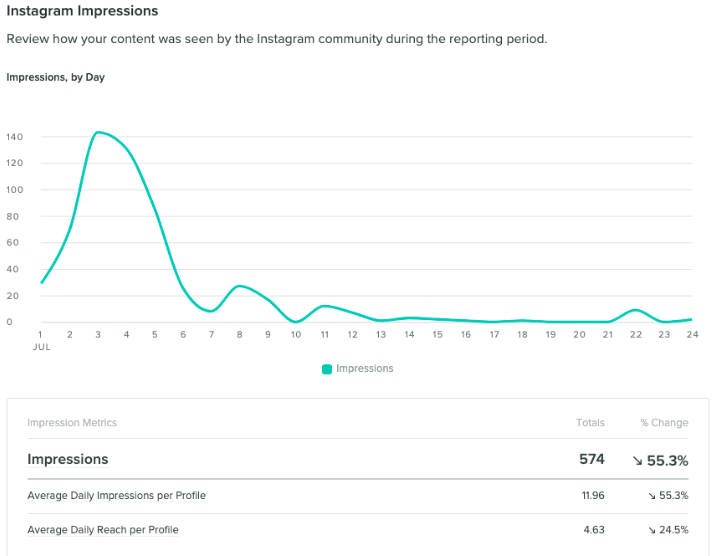
Impressions are the number of times a post shows up in someone’s timeline.
Reach is the potential unique viewers a post could have (usually your follower count plus accounts that shared the post’s follower counts).
While impressions can tell you a lot about your content’s potential for visibility on social media, it’s still important to look at other metrics.
If you have multiple goals of both increasing awareness but also educating your audience, then you might want to include looking at engagement and impression numbers in addition to just impressions.
If you have a post with high impressions but a low engagement rate, chances are your post wasn’t interesting to your audience or didn’t grab the readers’ attention.
If you have a post with low impressions but high engagement (mainly shares), you know it was worth people’s time to read and engage with.
Engagement:
One of the most popular areas to measure in social media is how people are participating with your brand. Facebook shares and posts help show you who is spreading your content, while comments, replies, and likes can tell you more about those responding to it.
When deciding which engagement metrics (Facebook Shares or Twitter Retweets) best suit what type of interaction that fits into your goals for social media, this will be helpful when determining these numbers daily so that they reflect progress towards achieving set objectives
Are you focused more on generating interaction (replies, comments) or spreading a message (retweets and posts)?
Or are you more focused on a particular business goal?
If those are your goals, you should look at engagement from a different perspective.
The key is to take into account what metrics matter for that goal and adjust accordingly. For example, total retweets could be more important than likes if you’re trying to spread the word about a new product or discount on Twitter.
Share of Voice:
Share of voice is a metric often used in public relations, competitive analysis, or paid advertising campaigns. It indicates how much people are talking about your brand online, and you can compare it to other competing businesses.
Take a look at how your competitors are doing on social media and see what percentage of the overall conversation about that industry is focused on their brands compared to yours.
By examining this information, you can start to understand where the gaps are in your performance.
To calculate the share of voice, divide your brand’s traffic by the total market traffic. This will give you a percentage that indicates how much attention people are giving to your business compared to other companies in the same industry.
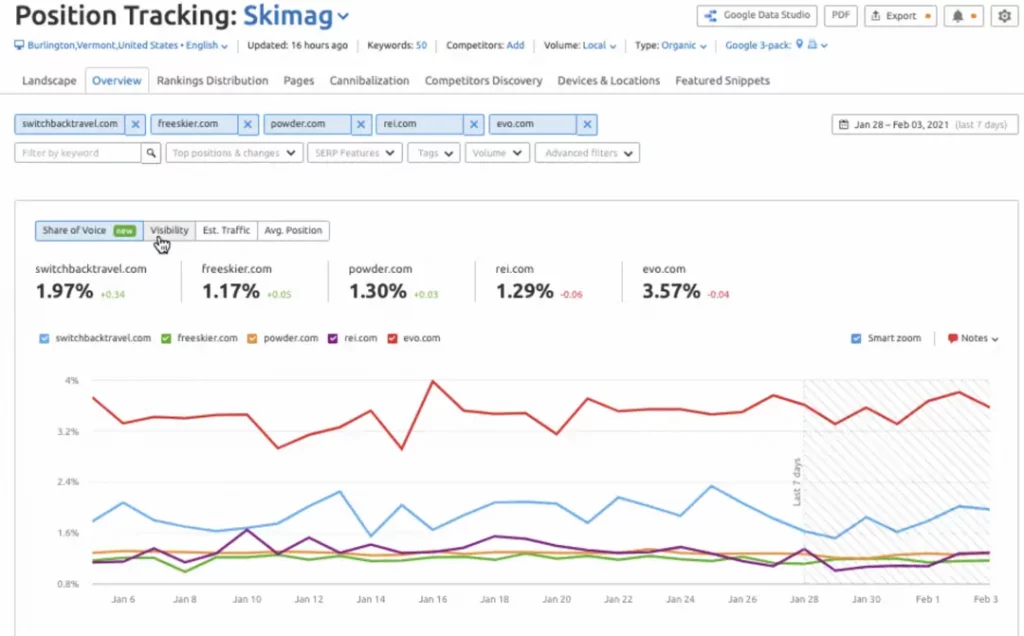
Your brand’s traffic / The total market traffic = Your brand’s share of voice
Influence:
Who is talking about your brand, and what kind of impact do they have? What’s the quality, or persuasiveness, of their message? Do they have any traffic-driving links that will boost your website’s rankings?
ROI: Referrals & conversions
In our opinion, this is the most crucial metric in digital marketing. If you are doing it right, your social media efforts should be driving actual business results.
ROI is the best way to measure whether or not your strategy is working and, if so, how well it’s performing against the time and money that went into it.
Start by tracking the number of new leads or sales generated.
Last but not least, make sure you measure your overall performance against your goals. This will allow you to tweak and adjust as needed to improve and refine your strategy for future campaigns!
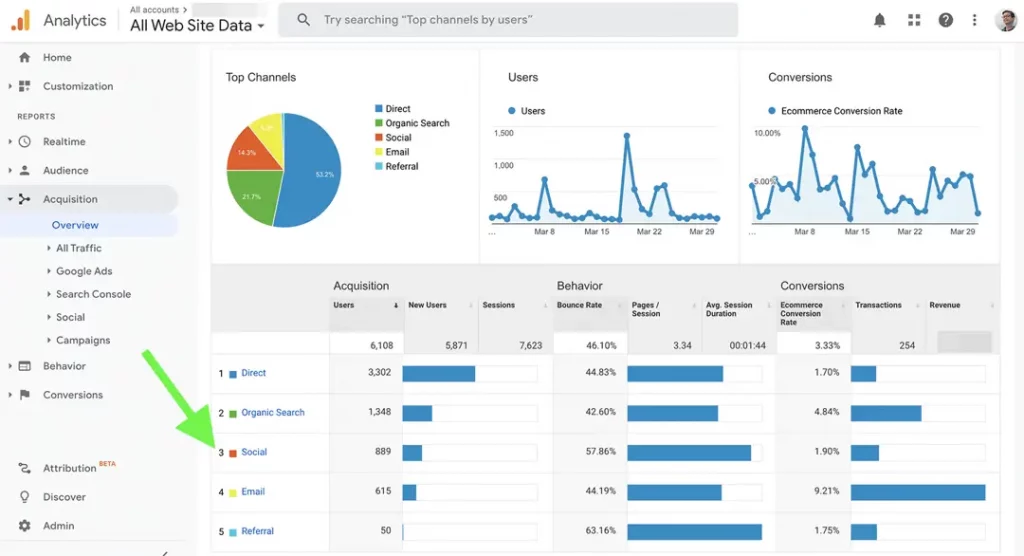
Referrals are how a user lands on your website. In web analytics, you’ll see them broken down into sources. “Social” is usually the source/medium you’ll be monitoring, and then it’s broken down by network.
Conversions are when someone purchases something from your site. A social conversion means they visited via a social media channel and then purchased something (or performed another desired action) in that same visit.
Click-Through Rate
Click-through rate (CTR) compares the number of times someone clicks on your content to the number of impressions you get (i.e., how many times an ad was viewed). A high CTR means an effective ad.
Brand Awareness/Recognition
People should know who you are. An effective way to measure awareness is by using a survey or other methods to collect information on how the public views your company.
Are you trying to define your social media strategy? Contact us, and we’ll help you develop a social strategy to get your social media content in front of the right audience at the right time.
We’ll help you develop a social strategy based on the metrics that matter in your industry. We’ll also show you how to measure the success of your social media strategy using real-time analytics.
Important metrics should be based on your goals.
At the end of the day, the metrics that matter to you should be based on your business goals and the KPIs that can help you achieve them.
A huge part of digital marketing is understanding what’s possible for a client and then identifying which metrics are most important to them so we know how to track their success moving forward.
Some businesses (like ours!) want to see if there’s an interest in their product and nurture a target audience down the sales funnel, while others are concerned with the cost of their ad spend and want to show a positive return on their investment.
Track Important Metrics with Google Analytics
Although there are numerous tools that you can use to track your social media activity, Google Analytics is a great starting point. It’s free and can tell you an enormous amount about the users interacting with your content on these platforms.
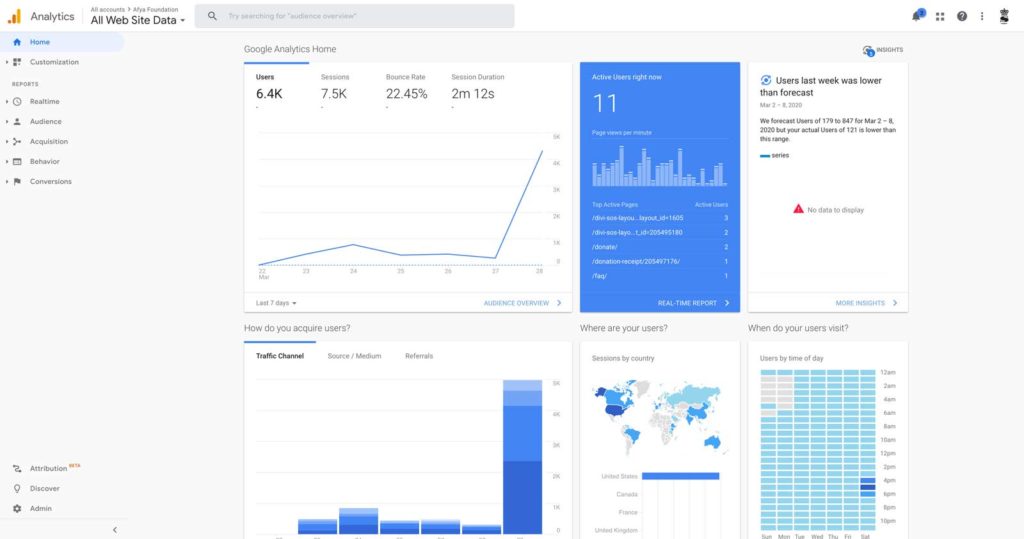
Don’t get wrapped up in Vanity Metrics.
While it may be easy to focus on vanity metrics– it’s one of the easiest mistakes to make, especially when you first get started with social media.
Even though some metrics (like engagement) are important, they aren’t important if they don’t lead to your business’s success.
One of our clients tracked “likes” as a vanity metric for well over a year before we convinced them to stop doing it and focus on other key metrics that would measure the effectiveness of their social media strategy.
Social media is an increasingly popular digital marketing channel. It can reach broad audiences in a targeted and engaging way, but how do you know what’s working?
Like so many other digital channels, there are plenty of things to measure like so many other digital channels, and it’s important not to focus on the vanity metrics-things that don’t matter.
Contact us today so we can show you which social metrics you should pay attention to reach your social media goals.
